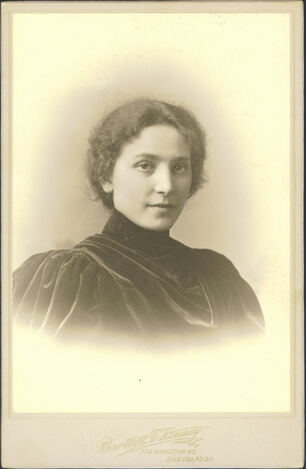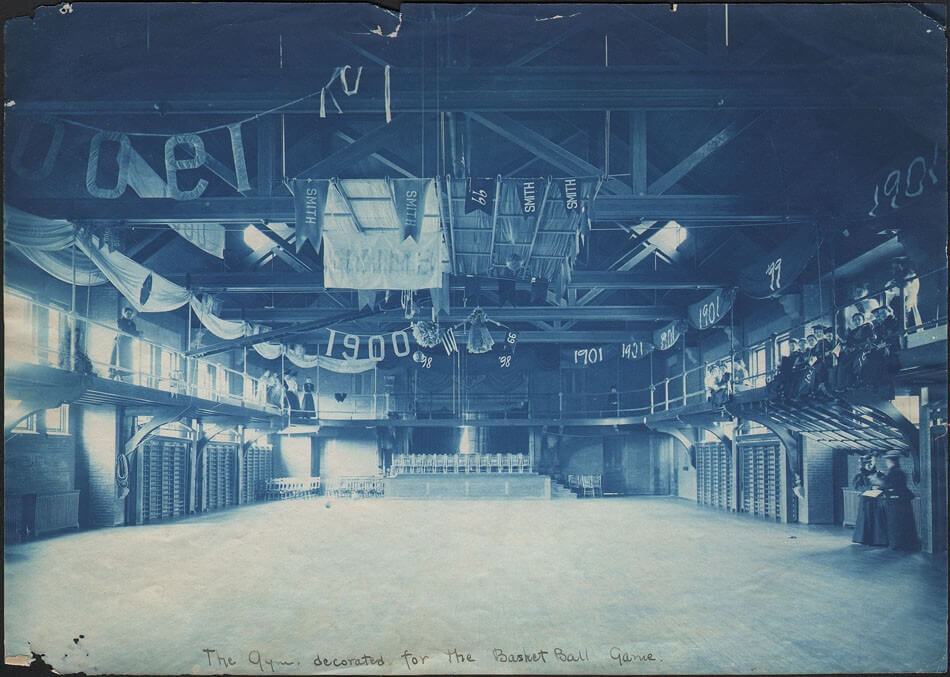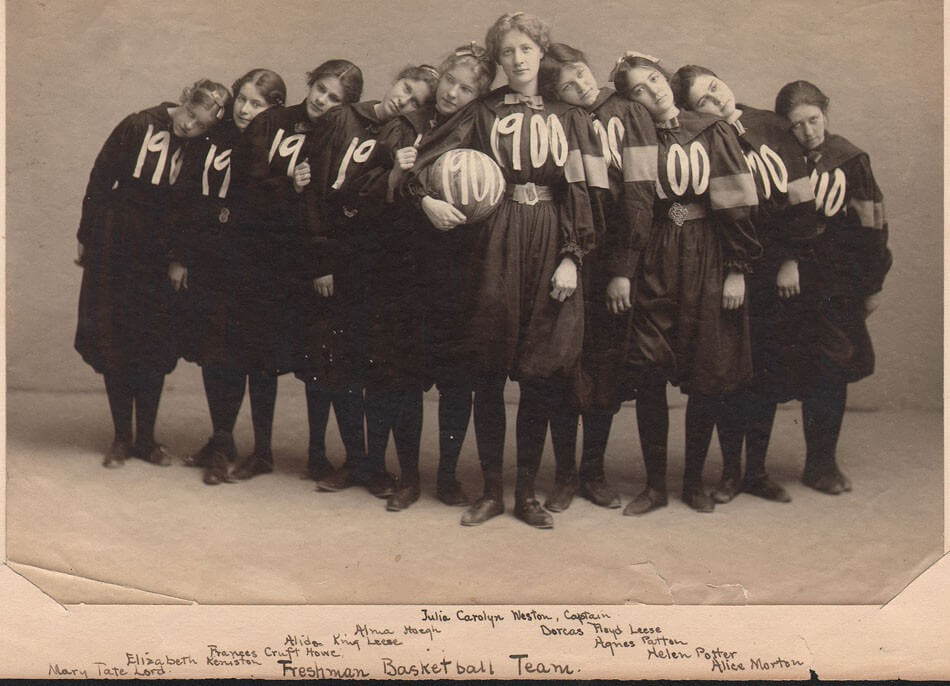Senda Berenson
Senda Berenson, the “Mother of Women’s Basketball” in the United States, grew up in the West End after her Lithuanian family moved to the neighborhood in 1875.
Senda Berenson was born as Senda Valvrojenski in Vilnius, Lithuania on March 19, 1868. Senda’s father, Albert, immigrated to the West End in 1874; he sent for the rest of his family to arrive in the neighborhood the following year. Upon settling in the West End at 32 Nashua Street, Albert had Senda and her older brother, Albert, change their surname to Berenson in order to Americanize their identities. Senda Berenson soon attended the Girls’ Latin School, then located in the South End, but did not graduate. She then enrolled at the Boston Conservatory of Music to study piano. One major difficulty appeared: she was too physically frail to practice piano for extended periods. This obstacle motivated Berenson to enroll at the Boston Normal School of Gymnastics in 1890, so that she could become physically stronger. The school was founded by Mary Hemeway in 1889 in order to improve women’s health through physical education, at a time when women faced the societal expectation that they be physically frail.
Berenson’s motivation to become stronger developed into an appreciation for physical education, which became her career. In 1892, Berenson was hired by Smith College, a women’s college in Northampton, MA, to teach physical education, particularly Swedish gymnastics (which she learned at the Boston Normal School). That fall, Berenson introduced basketball to her students roughly a year after James Naismith invented the game in Springfield, MA in December 1891. Berenson visited Naismith in Springfield after reading an article of his about basketball, and she revised his original rules in order to adapt the game for women. Unlike Naismith’s version, which involved full-court movement and battling for possession of the ball, Berenson assigned players to one of three zones which they could not leave. Women were prohibited from dribbling more than three times, holding the ball for more than three seconds, or snatching the ball out of an opponent’s hands. Berenson’s rationale for modifying Naismith’s rules was to give women a fun opportunity for exercise without fostering “dangerous nervous tendencies” that could adversely affect “the grace and dignity and self-respect we would all have her foster.” Berenson made concessions to this gendered preoccupation with women’s ‘grace and dignity’ because she was concerned that women would never be allowed to play basketball unless it was consistent in some way with their “womanliness.” But in 1894, Berenson challenged patriarchal attitudes about women’s physical fitness when she remarked that “until recent years, the so-called ideal woman was a small waisted, small footed, small brained damsel, who prided herself on her delicate health, who thought fainting interesting, and hysterics fascinating.”
After Berenson taught her students to play basketball, she organized, on March 22, 1893, the first women’s collegiate basketball game between a team of freshmen and a team of sophomores at Smith College. The sophomore team won the game 5-4 in front of a crowd of all women (men were not allowed then to be spectators). Low-scoring games were common in collegiate basketball at the turn of the twentieth century. In 1896, when Stanford and UC Berkeley held the first intercollegiate women’s basketball game, the final score was 2-1. In 1899, Berenson published her rules for women’s basketball, and two years later edited the first Women’s Basketball Guide published by A.G. Spalding. Berenson left Smith College in 1911 after marrying Herbert Abbott, an English professor, though she continued to edit Spalding’s rulebooks. Berenson’s version of basketball spread to many other women’s colleges across the nation, and she continued to edit updated rulebooks for the game. Because the sport was relatively new, the pioneers of women’s basketball were open to modifications in the game and suggestions for improvement. The Spalding’s rulebook for 1916-1917 told readers to mail their input to Berenson:
We hope the rules for 1916-17 will be approved by all players who have the best interests of basket ball [sic] at heart. We have always in mind, however, the great danger of over ruling the game. We would urge all players to adopt the rules as revised in this issue–without any modification. If, after using them strictly and with the right spirit for a season, some changes still seem necessary for the good of the game, under all conditions, we shall be very glad to get suggestions for such changes and shall consider them with care. These should be sent to Mrs. Senda Berenson Abbott, 72 Dryads Green, Northampton, Mass.
When the National Women’s Basketball Committee formed in 1905, Berenson served as its first chair and held the position for twelve years, until 1917. The following year, women’s basketball adopted a basket with an open bottom, just like the men’s games, replacing the original closed basket with a pull chain.
Berenson died on February 16, 1954, as a resident of Northampton, MA. But in 1985 she joined Margaret Wade as one of the first two women to be inducted into the Naismith Memorial Basketball Hall of Fame in Springfield, MA. Berenson was one of the first inductees to the Women’s Basketball Hall of Fame, in Knoxville, TN, when it opened in 1999.
Article by Adam Tomasi










